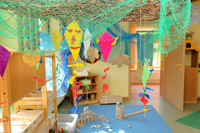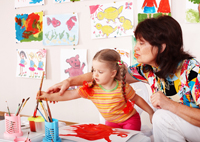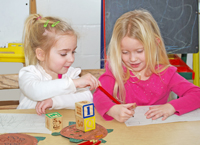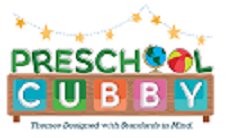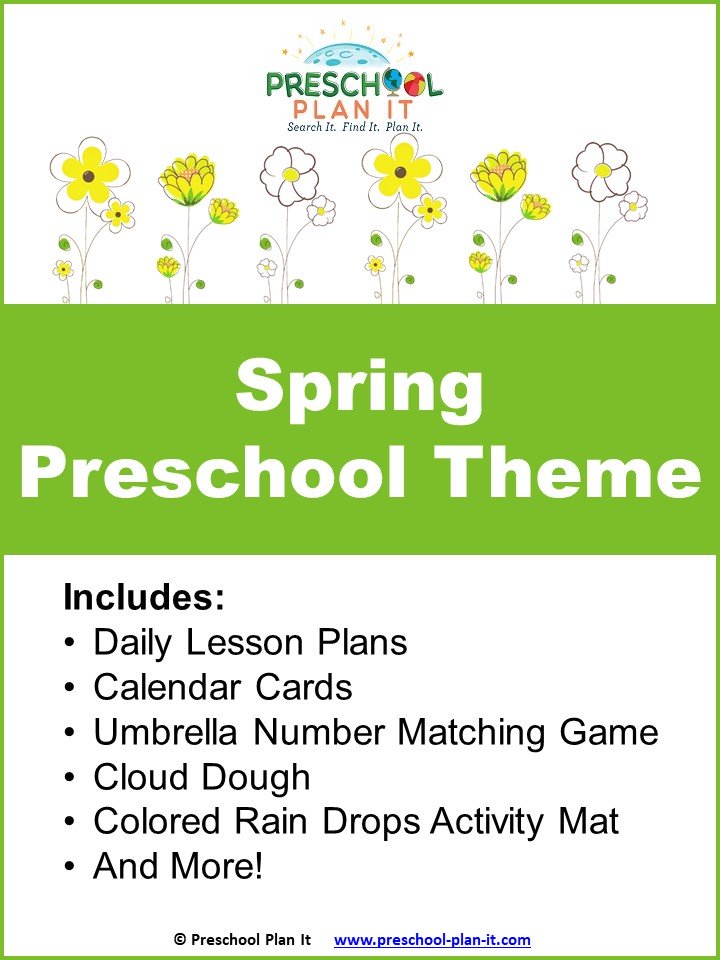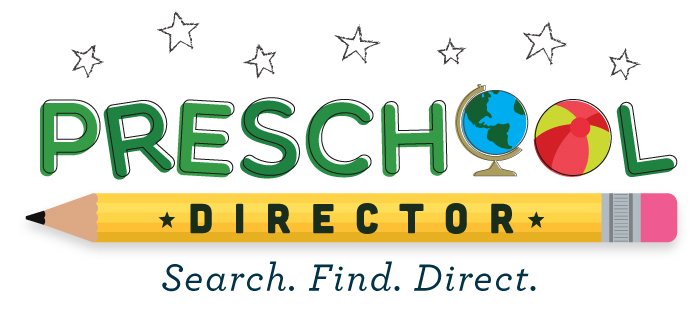Reggio Emilia Approach in Preschool
The Reggio Emilia approach to early learning was created in Reggio Emilia, Italy after WWII. It operates on the premise that early childhood education is the combined job of the parents, teachers, and community.
The schools are run by a council with representation from all of these groups. The staff is made up of two teachers for each classroom, an artelierista (an art teacher) for the entire school, a nutritionist, a cook, and an administrator.
The environment is often called, "The Third Teacher" because it is so important to the proper development of the children. Reggio Emilia classrooms have their own kitchens with cooks and dining areas created especially for the youngest children who might eat there. The nutritionist on staff provides training to parents as well as planning nutritious meals for the children.
One of the most important aspects of the Reggio Emilia approach is the aesthetic value. There are plants, lots of light and doors from each classroom into the outdoors space. The hallways in most Reggio programs are called ateliers. This is a French word meaning workshop. In Reggio programs, this space is actually a display area where the works of art of the children are displayed and informal meetings of staff, students and parents.
These are spaces where children can work in large or small groups to explore a topic and create an expression of their understanding of that topic (often through the use of art). There is a common dress-up area for children to use as they create an appropriate social environment for themselves. Children's work is displayed tastefully throughout all spaces.
The displays of the children's projects along with all of the documentation are constantly changing. It takes much organization and planning by the teachers!
Philosophy of the Reggio Emilia Approach
The classroom teachers, atelierista, parents, and members of the community observe the children. They look for important issues, concerns or interests for exploration. They choose a topic, then they discuss the topic with the children to find out what they know and what they would like to know about the topic.
They introduce the children to some materials they might use to explore the topic and create a project to demonstrate their understanding of the topic. However, in the end, the children take responsibility for their own learning in a Reggio Emilia classroom.
Learning about the Reggio Emilia Approach
This is an approach that is not seen often in the United States. However, you may already be instituting some of the philosphy in your program without even realizing it! If you use any type of Project Approach or develop a theme that is based on the children's interests and continue with that theme or topic based on the children's interest and learning, you are following some of this approach!
Here are some of my favorite books that helped me to understand the Reggio Emilia approach as well as institute some of its great teachings. Click on each picture to read about each book.
Following a Topic the Reggio Emilia Way
They may choose to go a different direction with the topic than the teachers expected or may choose to explore the topic and demonstrate their understanding using an entirely different media than expected.
The atelierista teaches the children to use the materials and tools and works with the teachers to help the children create understanding of the topic. Those who use the Reggio Emilia approach look at children's mistakes as an important teaching tool.
Often children explore the topic in depth. They may create a project to demonstrate their understanding of the topic then re-create the project several times as their understanding becomes more clear.
Sometimes children create several different projects on the same topic. The topic itself expands as children come up with new questions related to it.
Children control their own learning through moving, touching, seeing, hearing, and through their relationships with other children and materials. Children use print, art, construction, drama, music, puppetry and shadow play to explore a topic and test hypothesis. They learn to cooperate, negotiate and compromise as they work on projects together.
Children critique their own work and the work of other children. They might ask questions about the work to clarify the meaning behind it or ask questions about the project itself.
Children often work together on projects and often debate issues as they arise. Working in groups requires children to learn and show respect, responsibility and community.
Children in a Reggio Emilia school will attend each "grade" for three years, similar to a Montessori classroom. The first group includes three months to three year olds. The second group includes three year olds to six year olds. In this environment older children can guide younger children and children who have special needs.
Children learn through exploration and discovery. They often make visits into the field. Sometimes they return with objects they will display. They may use information gathered on their trip to help them better undestand the topic of study and or create a project to demonstrate that understanding.
Teacher's Role & Community Involvement
The teachers document conversations children and staff have while the projects are being created. They document critiques of the projects as well. All of this is displayed with the projects the children create.
The teachers take great care to display the projects in an aesthetic way, therefore showing respect for the children who create them. The teachers explore and discover along with the children. Even though teachers work as partners along with the Reggio Emilia community, they observe the children constantly.
Families are a very important part of the Reggio Emilia approach. Family members are inlcuded in decision making and are involved in all aspects of the children's education. Family members often transfer the approach to the home.
The focus of a Reggio Emilia School is on community. Reggio Emilia Schools are more focused on social skills than most of the other approaches used in the United States. Well-known research in the United States proves that people who have attended preschools that stress social skills are more likely to hold jobs, stay out of jail and have successful relationships.
The Reggio Emilia approach to preschool education is based on a constructivist theory to teaching - like Piaget and Vygotsky. When implemented correctly, it lends itself to an environment in which children feel safe to create their own learning and make mistakes. It provides an enviroment where teachers, parents, and the community work together to make education a meaningful experience for all involved.
For more information on the Reggio Emilia Approach, visit their North American website
Go to the main Preschool Curricula page to read more about preschool approaches to education!
Go to Preschool Professor's HOME Page

